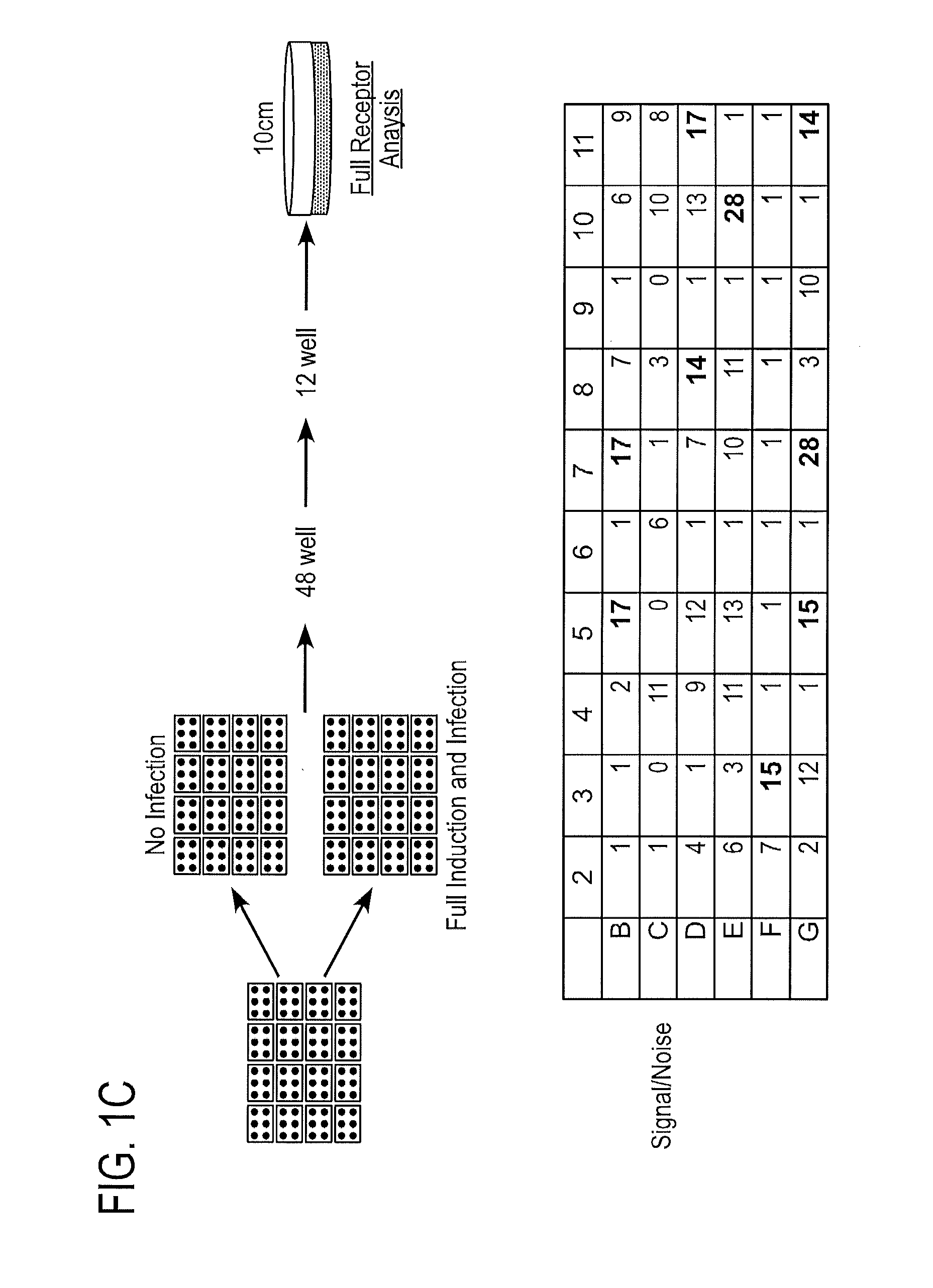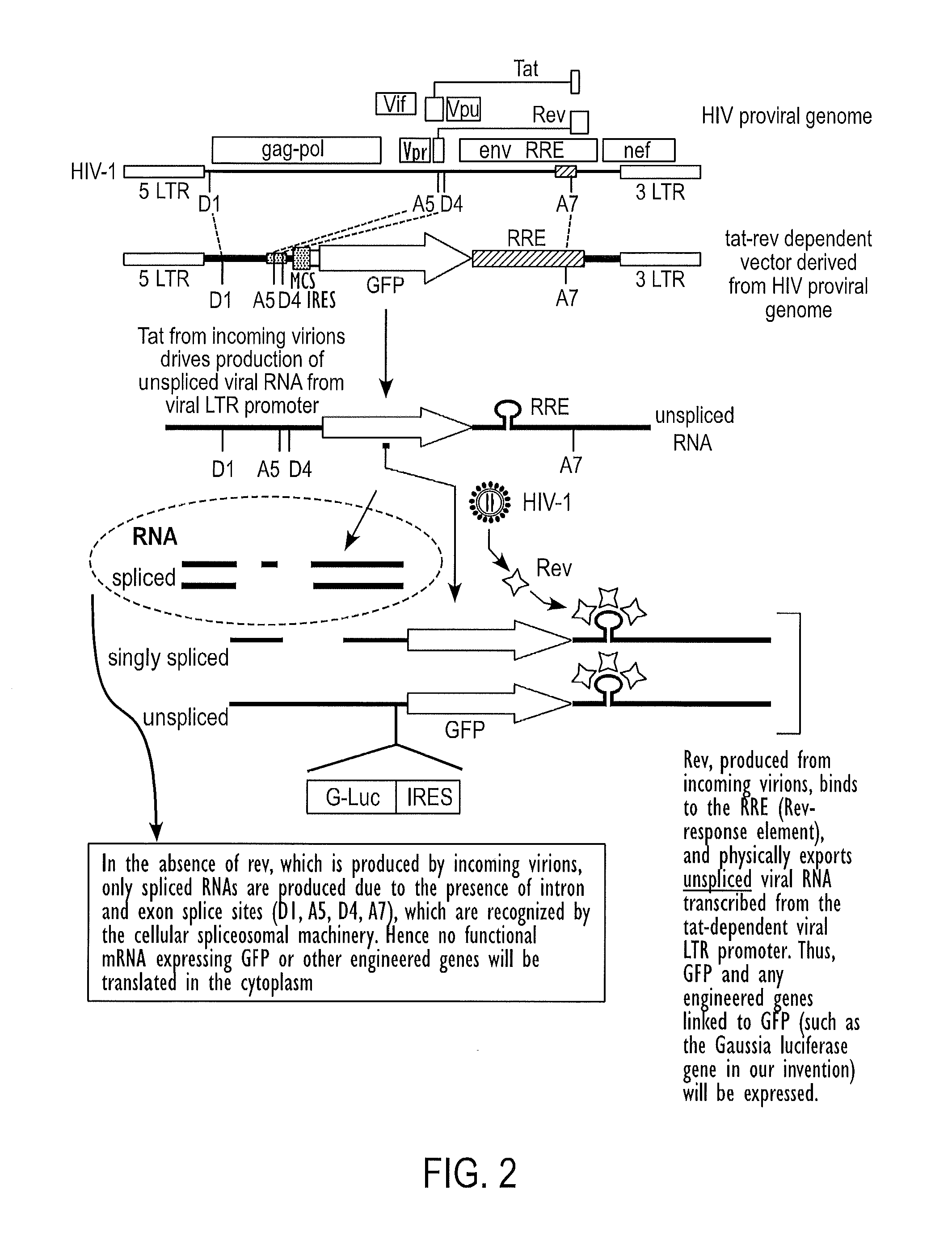Novel rapid and highly sensitive cell based system for the detection and characterization of HIV
a cell-based system and high-sensitivity technology, applied in the field of hiv detection and characterization, can solve the problems of affecting the utility of cell lines, requiring laborious cell preparation, and affecting the efficiency of fluorescent proteins, so as to achieve greater sensitivity, entry, and improve the efficiency of cd4/ccr5 usag
- Summary
- Abstract
- Description
- Claims
- Application Information
AI Technical Summary
Benefits of technology
Problems solved by technology
Method used
Image
Examples
Embodiment Construction
[0053]One aspect of the invention is a novel cell line, an HIV tat-rev dependent GFP-Gaussia luciferase Reporter cell line, known henceforth as the GGR cell line, that detects pseudotype and replication competent HIV (cloned or uncloned isolates, in cell media or human serum) in less time, and with higher sensitivity compared to what is currently available. This GGR cell line provides an improved method of characterizing the entry phenotype of HIV envelope genes, and detecting and examining primary HIV samples in the context of laboratory research, clinical trial monitoring, and medical diagnostics. Examples include, but are not limited to, determining the functional HIV viral load, responsiveness to treatment, characterization of viral co-receptor usage (testing for viral co-receptor usage, i.e., CCR5 vs CXCR4, as required prior to prescribing FDA-approved CCR5 inhibitors), and characterization of other viral or drug resistance phenotypic properties that will guide future treatment...
PUM
| Property | Measurement | Unit |
|---|---|---|
| vector angle | aaaaa | aaaaa |
| vector angle | aaaaa | aaaaa |
| vector angle | aaaaa | aaaaa |
Abstract
Description
Claims
Application Information
 Login to View More
Login to View More - R&D
- Intellectual Property
- Life Sciences
- Materials
- Tech Scout
- Unparalleled Data Quality
- Higher Quality Content
- 60% Fewer Hallucinations
Browse by: Latest US Patents, China's latest patents, Technical Efficacy Thesaurus, Application Domain, Technology Topic, Popular Technical Reports.
© 2025 PatSnap. All rights reserved.Legal|Privacy policy|Modern Slavery Act Transparency Statement|Sitemap|About US| Contact US: help@patsnap.com



